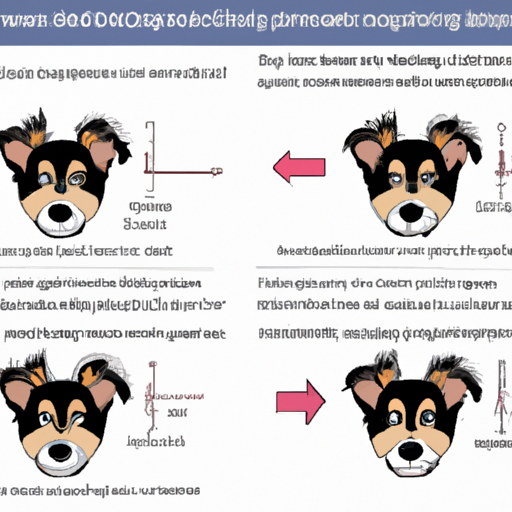As a dog owner, you might find yourself wishing for a quicker hair growth rate for your furry friend. Maybe it’s because a recent haircut went too short, or perhaps it’s due to hair loss from health issues or aging. Regardless of the reason, there are effective ways to stimulate your dog’s hair growth and improve their overall coat health. This article will guide you through the steps, tips, and strategies to make your dog’s hair grow faster.
Table of Contents
1. Understanding Your Dog’s Hair Growth Cycle
2. Essential Nutrients for Hair Growth
3. Dog Hair Growth Supplements
4. Proper Grooming Techniques
5. Frequently Asked Questions
Key Takeaways
– Understanding your dog’s hair growth cycle is crucial to promoting faster hair growth.
– Essential nutrients like protein, fatty acids, and vitamins play a significant role in dog hair growth.
– Dog hair growth supplements can help, but they should be used under the guidance of a vet.
– Proper grooming techniques can stimulate hair growth and prevent hair damage.
Understanding Your Dog’s Hair Growth Cycle
Just like humans, dogs have a hair growth cycle that includes stages of growth, rest, and shedding. The length and speed of these stages can vary depending on your dog’s breed, age, health, and even the season. Understanding these phases can help you anticipate your dog’s hair growth and provide the necessary care.
A typical dog’s hair cycle consists of three stages: the anagen (growth) phase, the telogen (rest) phase, and the exogen (shedding) phase. Some breeds like Poodles and Shih Tzus have a longer anagen phase, which results in faster hair growth and less shedding. On the other hand, breeds like Labradors and Beagles have a shorter anagen phase, leading to slower hair growth and more frequent shedding. Here is a more detailed explanation of the dog’s hair growth cycle.
Essential Nutrients for Hair Growth
A dog’s diet plays a significant role in its hair growth. Certain nutrients are essential for promoting hair growth and improving coat health. These include:
- Protein: Protein is the primary component of hair. A diet rich in high-quality protein can promote healthier and faster hair growth.
- Fatty Acids: Omega-3 and Omega-6 fatty acids help keep your dog’s skin hydrated and their coat shiny. They also play a role in cellular function and inflammation reduction, which can promote hair growth.
- Vitamins: Vitamins like A, B, C, and E contribute to skin health and hair growth. For instance, Vitamin A helps with cell growth while B-vitamins help with hair growth.
Ensure your dog’s diet is balanced and nutrient-rich to provide these essential nutrients. You can find a list of dog foods that are rich in these nutrients here.
Dog Hair Growth Supplements
If your dog’s diet is not enough to provide the necessary nutrients for hair growth, you might consider using dog hair growth supplements. These are often rich in the nutrients mentioned above and can help stimulate hair growth.
However, it’s crucial to consult with your vet before starting any supplement regimen. Overdosing on certain nutrients can be harmful to your dog. For instance, excessive intake of Vitamin A can lead to Vitamin A toxicity, which can have serious health effects. Your vet can guide you on the right dosage and the best supplement for your dog’s needs.
An article on One Top Dog provides a review of some of the best dog hair growth supplements on the market.
Proper Grooming Techniques
Grooming is not just about keeping your dog looking good. It also plays a role in promoting hair growth. Regular brushing stimulates the skin, improves blood circulation, and distributes natural oils across the coat, promoting healthier and faster hair growth.
But proper grooming goes beyond brushing. It also involves bathing your dog with a mild, moisturizing shampoo to avoid skin dryness and irritation. Avoid over-bathing as it can strip the skin of its natural oils, leading to dryness and slower hair growth.
Trimming your dog’s hair regularly can also help with hair growth. It removes split ends and reduces breakage, allowing healthier hair to grow. However, avoid shaving your dog’s hair too short as it can expose the skin to sunburn and other environmental harm.
You can find more grooming tips on One Top Dog.
Frequently Asked Questions
1. Can I use human hair growth products on my dog?
No. Human hair growth products might contain ingredients that are harmful to dogs. Always use products that are specifically designed for dogs.
2. How long does it take for a dog’s hair to grow back?
It can take anywhere from a few weeks to a few months, depending on the dog’s breed, age, health, and the care provided.
3. Can medical conditions affect a dog’s hair growth?
Yes. Conditions like hypothyroidism, skin infections, and certain allergies can lead to hair loss and slower hair growth. If you notice any unusual hair loss or slow hair growth, consult your vet.
In conclusion, making your dog’s hair grow faster involves understanding their hair growth cycle, providing a nutrient-rich diet, considering hair growth supplements, and practicing proper grooming. Remember, the health of your dog’s hair is a reflection of their overall health. Therefore, always prioritize their general well-being.
For more tips on dog care and grooming, visit One Top Dog.



